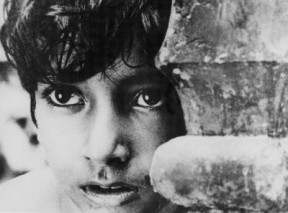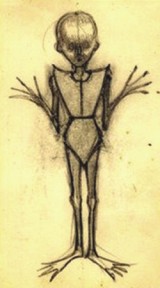It’s a well known fact that Ray was a master film maker who was revered, practically worshipped, in the West – especially Hollywood (list of his admirers include Martin Scorsese, George Lucas, James Ivory, Elia Kazan, Danny Boyle, Wes Anderson…). What’s little known is the fact that this man (arguably) had a hand in the making of one of the most popular Sci-fi epics ever- E.T. the Extra-Terrestrial ! Ray had conceived this idea about a friendly alien befriending a young boy, when he wrote the short story Bankubabur Bondhu. Later, when he described the story to Arthur C. Clarke on a visit to London, he was impressed and mentioned it to his producer friend Mike Wilson. One thing led to another and very soon, Columbia Pictures were on board, co-producing a major film on the story, now termed The Alien, starring Peter Sellers and Marlon Brando! But as fate would have it, Ray found the Hollywood marketplace a tad too expensive for his tastes, and finally dropped the idea. Come 1982, and E.T. was released all over the world with much fanfare. Ray and many others were shocked to observe the not-too-subtle similarities between E.T. and Ray’s original script! Ray says about this,
“E.T. would not have been possible without my script of The Alien being available throughout America in mimeographed copies.”
Read more about this here.
Okay, back to our post now: after much battles and many setbacks with funds for his film, Ray decided to concentrate on casting and come back to the finances later. He was determined to not to employ professional actors, a la Bicycle Thieves. For the part of the mother, he had in mind a friend’s wife, Karuna Bannerje,who was very much an urbane socialite, but Ray saw it in her to be able to play Sarbajaya, the mother. For the boy Apu’s part, Ray kept looking in vain (including putting ads in the paper when one gentleman brought his daughter with her hair cut short), until his wife one day came across the young Subir Bannerjee playing next door with his brother. Apu had been found. Similarly Durga (the daughter) was discovered in the form of Uma Dasgupta, in front of her school. Let the master take over here:
“We made enquiries and it turned out that the girl’s father was an ex-footballer. He had heard of my reputation as a book designer and desired to see me at his house on a Sunday morning. I turned up, chatted with the parents, had a cup of tea and selected their youngest daughter Uma Dasgupta on the spot to play Durga, when and if the film was made. I had taken my Leica with me and took her up to the roof to take some pictures. Since she seemed to be a bit demure, and Durga was a tomboy, I asked her to make faces for the camera. She obliged me with a total lack of inhibition.”
So the primary cast was in place. But finances were still an issue. Ray decided to raise the money by getting a loan against his insurance policy – he got Rs. 7000. That, in addition to some help from friends, came up to Rs. 17000. With that amount Ray and team decided to start rolling. The sequence they decided to shoot first was that of the children seeing the train for the first time, which he had pictured in a field of white Kans grass (Kash Flowers in Bengali). They detected such a place, and set out for the location one fine morning.
The first shot was to have that of Apu looking for his sister. Soon as Ray uttered ‘action’, this is what happened:
“What this produced was a stiff zombie-like walk from Apu which had no relationship with the kind of walk called for. I had told him that he was to walk, stop, turn his head this way and that, start looking for his sister and then walk again. This had no effect on the walk that now took place to greet my eyes and which the camera photographed using expensive raw stock. ‘Say “cut” if you are not happy,’ urged Bansi. I did so with considerable force’.”
The fight had just begun…
For the time being, I leave you with this:
[youtube=http://www.youtube.com/watch?v=AgXPStRWmsY]
To be continued…







